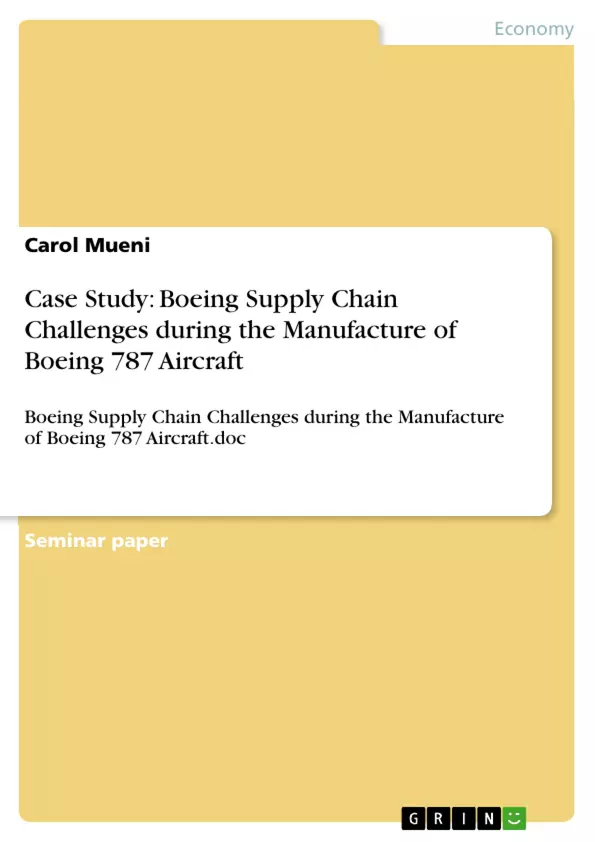Founded in 1916, at the Puget Sound location in Washington State USA, Boeing is the largest aircraft company in the world, manufacturing commercial aircrafts, military aircrafts, satellites, weapons and electronic defence systems. It has a history of being the best aircraft company in leadership and innovation to design leading aircraft designs. The company uses advanced technology, engineering skills and innovative leadership to design and develop its products. As a result, it is the best in the USA and worldwide, serving many other nations with commercial and military aircraft.
To remain innovative and competitive, in 1990s Boeing started considering a replacement of the Boeing 767, due to slow rate of sales. By 16th December 2003, Boeing announce that it was going to assemble the 787 jet in its factory located at Everett Washington . In building this plane, the company focused on reducing the time line from 6 years to 4 years. Instead of contracting the plane from scratch, it was going to outsource parts and issue sub-contracts to other companies in other nations.
The process of production requires raw materials and labor, which take time to procure and manage for the companies to come up with the right products. For the Boeing company to produce the 787 parts in the USA, it would have incurred high costs in procurements and a lot of management logistics. To cut down these costs, outsourcing was a nice way out that provided the company with the ability to enjoy the availability of skilled labor and raw materials in the outsourcing companies.
Table of Contents
- Case Study Background
- Major supply challenges suffered by Boeing
- Communication failure
- Quality control challenges
- Delivery time challenges
- Managerial problems
- Resources allocation challenge
- Labour and technology challenges
- Supplier's Capability Assessment Challenge
- Solutions to Supply Chain Problems
- Supply Chain Management
- Supply Chain Strategies
- Leadership experience
- Proactive supply chain management
- Customer Relations Management
- Conclusion
Objectives and Key Themes
This case study examines the challenges faced by Boeing during the manufacture of the Boeing 787 aircraft. The study focuses on the complexities of managing a global supply chain and the impact of communication breakdowns, quality control issues, and delivery delays on the project's success. It aims to identify the key factors contributing to the supply chain problems and explore potential solutions to improve future projects.
- Challenges of managing a global supply chain
- The impact of communication breakdowns on project success
- Quality control issues in a multinational manufacturing environment
- Delivery time challenges and their impact on project timelines
- Strategies for effective supply chain management
Chapter Summaries
The case study begins by outlining the background of Boeing's decision to outsource a significant portion of the Boeing 787 production to companies located in various countries. The rationale behind this decision, aimed at reducing production time and cost, is explained in detail. The chapter highlights the company's history of innovation and its ambitions to remain competitive in the aircraft industry.
The study then delves into the major supply chain challenges encountered by Boeing during the 787 project. It focuses on the impact of communication breakdowns arising from the geographically dispersed supply chain, leading to delays and quality issues. This section examines the challenges of managing quality control across multiple suppliers, as well as the difficulties in coordinating delivery schedules and managing resources effectively.
Keywords
The key themes and concepts explored in this case study include: Boeing 787, supply chain management, outsourcing, communication failure, quality control, delivery time challenges, resource allocation, global supply chain, and leadership in aviation.
- Arbeit zitieren
- Carol Mueni (Autor:in), 2010, Case Study: Boeing Supply Chain Challenges during the Manufacture of Boeing 787 Aircraft, München, GRIN Verlag, https://www.grin.com/document/265533



